Looking Down on Wayne Alberta
This is a reworked Then & Now originally posted ten years ago and takes inspiration from by Mike Dunham-Wilkie’s well known train photographs of Wayne Alberta. His shots are from 1978. We’re reusing our original now photos, but have revised and updated the info. Ugly and somewhat outdated, the piece needed some work. As we’ve gotten better at lining these up, we’ve often thought of reshooting the piece, but our pics were special to us and kept. While not spot on, it was one of the first times we got close to matching the originals and with that a bug got planted.
Before, we just haphazardly shot to capture the general now scene and not duplicate it exactly. Then we saw these ones and they were better than usual, but a fluke in all honesty, and from that time forward we had to up the game. We’re still not always on point, but results this way are more fun and certainly more challenging. We still might do a reshoot, but will always love these pics and plan to keep them up.
Looking Down on Wayne Alberta: in 1978 and 2013. With Chris Doering, Connie Biggart & in spirit, Mike Dunham-Wilkie (BIGDoer/Synd)
Do the same…
These were shot from a bluff overlooking the valley town and in Mike’s photo we can see a train passing below and two grain elevators. On our visit a lot has changed yet that haunting landscape remains. To reach this vantage point required a bit of work, but the results speak for themselves. The beauty of the valley, cut by the Rosebud River, is simply amazing.
It’s almost like looking down on a model scene and not something full scale.
In the first of Mike’s photos, we see a CNR local freight working its way up the valley. Of interest railway types, it’s being pulled by two GMDD (General Motors Diesel Division, London Ontario – now closed) model SW1200RS locomotives. Built in the period 1956-1960 or near the end of the steam-to-diesel transition era, they were purpose built for yeoman service. You could see them working yards, sleepy branch lines and pulling local mainline freights. The train seen here is the latter and soon it’ll gather up those three grain cars on the elevator siding before departing.
Its destination, on this secondary line, was Calgary.
The CNR had something close two hundred of this model and lots could be found out on the western prairies.
Interestingly, one locomotive is still painted in the CNR’s old green and gold scheme. That was phased out in the early 1960s and replaced by the black and red combo seen on the other. By this date it was one of very few locomotives still in these old colours and likely repainted not long after. Many from this same class worked into the 1990s, and a few even longer. We sure wonder that happened to this pair.
The SW1200RS model was Canada only and a variation of the popular SW1200 switcher (produced in both the US and here) but modified for road service. Competitor Canadian Pacific Railway also had some on their roster and they too often congregated out on the plains.
The grain hoppers seen in the ’70s photo would have been fairly new at the time and fleets of these government sponsored cars were constructed to augment and then replace huge numbers of inefficient grain box cars then in use. At the time of Mike’s photos it would have not been unusual to see either type on an elevator siding. Box cars were used well into the 1980s and even a bit beyond.
Two of the hoppers (far right) were special lightweight variants and made partly of aluminium. These were typically used on certain weight-restricted branches but the line here was not really in that category.
This train includes a number of maintenance of way bunk cars on the front end. These were a rolling home for track crews when working in remote or hard to get to areas and seeing them here may not be surprising. This subdivision, with it’s many bridges and unstable hillsides, was maintenance intensive. It’s one reason the line closed by the time we shot it and there’s more on this below.
Both of the elevators seen were built in the 1920s and interestingly both destroyed in spectacular fashion by a fire in 1980. At one time one other elevator could be found in town although we’re not sure the location. Perhaps to the right of the others, but there’s not much room there, so who knows? Of the two elevator companies represented, neither Alberta Wheat Pool (AWP – in original mineral brown paint) nor United Grain Elevators (UGG) exist to this day, at least not in the form seen. Through many mergers and acquisitions they eventually joined up to become part of present day Viterra.
The elevator siding is interesting that it’s stub ended. Typically the railway would use a run-through style siding instead (with a connection on each end) which simplifies car handing. The topography and tight spaces here presumably prevented this, so it must have been a nuisance to switch for eastbound runs. The train seen is westbound.
Getting to our now image we can see that things have not changed much. The elevators are gone, of course, but at the time of our now photo the rail line still remained although not in use. The next year, the track got pulled up. Some buildings in town have been added and others gone as well, but change has been subtle.
The last trains through here were around 2008-2010 (reports differ) and this ended almost a hundred years of service on the line. Oddly when it closed the rails were not pulled up right away and left alone instead. We recall talk of a possible sale to another carrier for one, but other reasons may have been in play.
This section saw only a couple trains a day by the end and this combined with high maintenance demands sealed its fate. Most traffic was through freight from Saskatoon to Calgary or the other way around, with little local work in between. The former could easily be rerouted with considerable cost savings and what little traffic lost would be no big deal. This is the CNR’s ex-Drumheller Subdivision – nee Canadian Northern (CNoR) built under the charter of the Alberta Midland Railway in the 1910s.
Two stub end sections of this line remain on either end today with one terminating at Lyalta Alberta on the Calgary side. The other ends in Oyen, right near the Saskatchewan border and is served from Saskatoon.
You’ll note some orange patches on the slopes in back in these photos and these mark the site of a coal mine. The material is oxidized shale from the underground workings, discarded and deposited as waste. If you are in the Red Deer River valley region and see any, it means you’re close to a mine site. Many operated in this valley over the years, and Wayne was home to a half dozen such firms. This view from here in the 1920s would be quite a bit different and you’d see many tipples down there. There’s not much room for stuff in the narrow valley but they squeezed them in somehow.
The two patches seen on our photos mark the Jewel (1916-1938) and Rose-Deer mines (1912-1934) respectively. There’s workings right under our shooting position, from yet another mine, and the ground all around is literal Swiss Cheese.
In the last photo Mike was shooting roughly southwest and we duplicate the angle. From here the line follows a rather difficult route up the valley for many, many kilometres to point near Rockyford where it breaks out onto the plains. Along the way there are countless bridges, with the topography and winding river forcing the railway to cross and recross it numerous times. Talk about an expensive line to build and keep up.
The Rosebud River shows near flood stage in out photos, and for the days leading up to our visit it had rained almost non-stop. If you know the Drumheller area, you’re aware of the famous sticky and slippery mud that happens after a rainstorm. This made our job a bit of a challenge as we had to climb the bluff above to obtain our pictures. We checked with landowners first and they’re were fine as long as we kept to the side of cultivated fields. I don’t think they fully understood what we wanted to do.
Wayne is a cool little town, most famous for its saloon and the many road bridges one needs to cross to get there. You can see one (in blue) off in the distance in our now photo. The Last Chance saloon is a favourite of biker types on a warm summer weekends and it’s often wall to wall cycles then. At one time Wayne had a population of many thousands but as the coal mines closed there was little reason for people to stay. Almost everyone left and now there’s just a handful.
Mike is the son of the late Dave Wilkie, also a well known railway and ship photographer. In around 1980 I (Chris) recall meeting them (or perhaps just Dave) at a local model train show for a presentation of a slide show of his (their?) work. I may have actually seen the photos used here at that time. The first image from Mike is one of our most favourite railways shots ever. We recall seeing it many times over the years elsewhere as well.
Mike Dunham-Wilkie’s photos are used with permission and we’re thankful for the opportunity. Now to climb down the a slippery slope…
Know more (new windows): Mike Dunham-Wilkie Train Photos and Dave Wilkie Train Photos.
They’re saying…
“Your photos are amazing! I live vicariously through you!” Patricia Thorsen Lawrence.
More train themed Then & Nows…
Canadian Pacific Railway Banff Park.
Rosebery BC Then & Now.
Empress AB then and now.
If you wish more information on what’s seen here, don’t hesitate to: contact us!
Date of Adventure: 1978 (Mike) and 2013 (us).
Location(s): Wayne, Alberta.
Article references and thanks: Mike Dunham-Wilkie, Canadian National Railways Historical Association, Canadian Trackside Guides and Alberta Energy Regulator mine records.
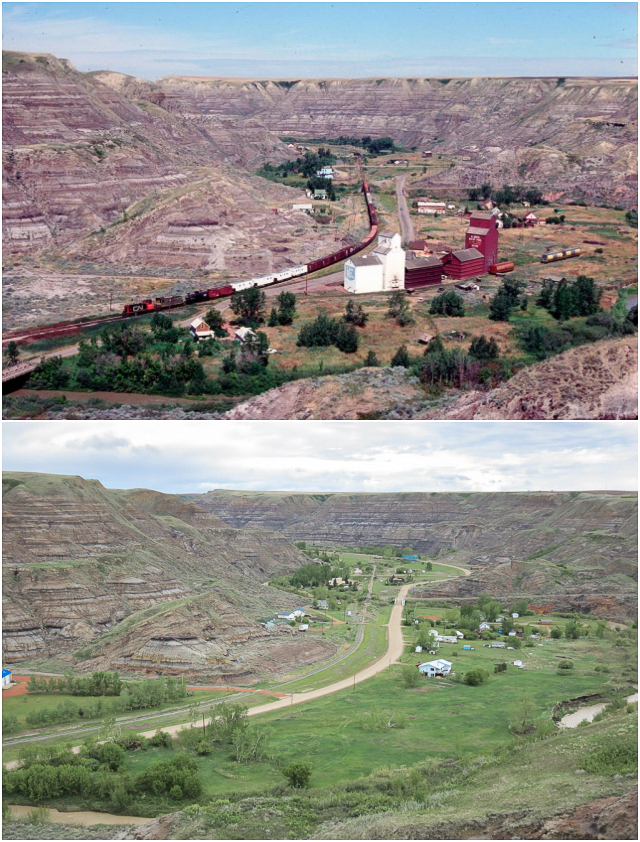
Wayne AB in 1978 & 2013. Then photo Mike Dumham-Wilkie.
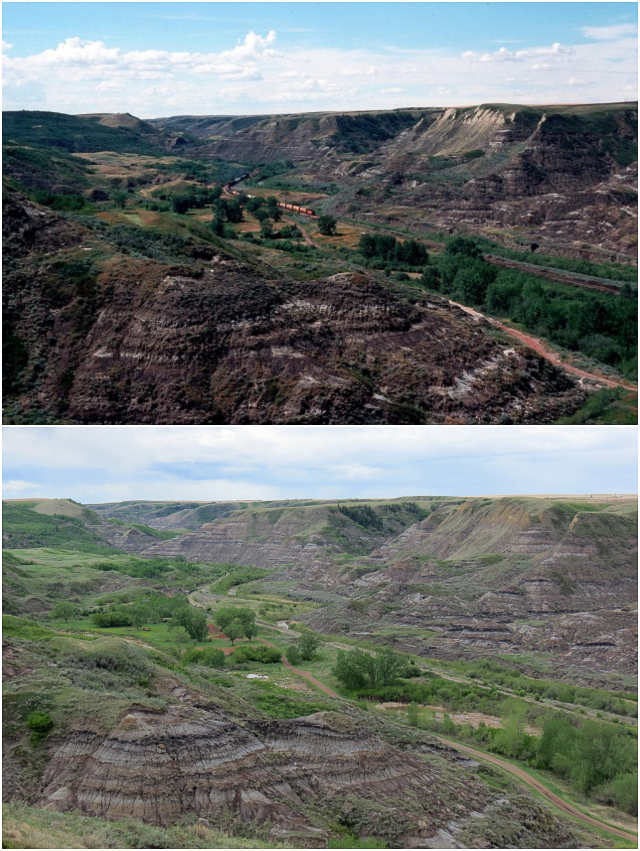
Turning west. Then photo Mike Dumham-Wilkie.
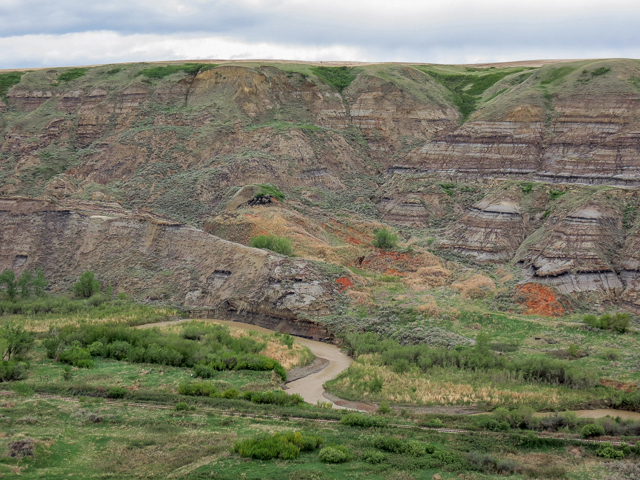
Orange material tells us a coal mine operated here.
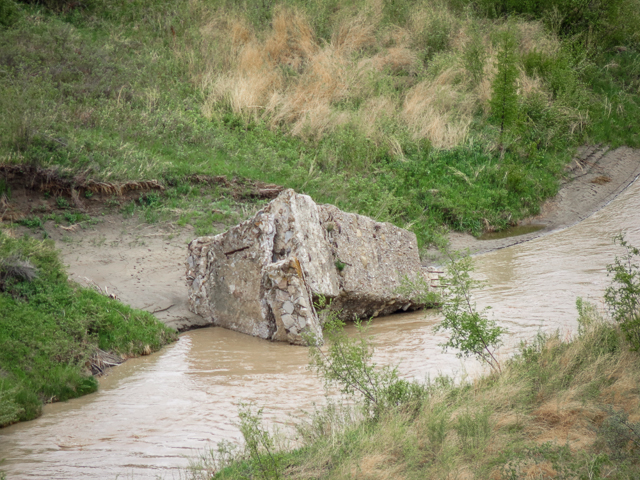
A block of concrete in the Rosebud River.
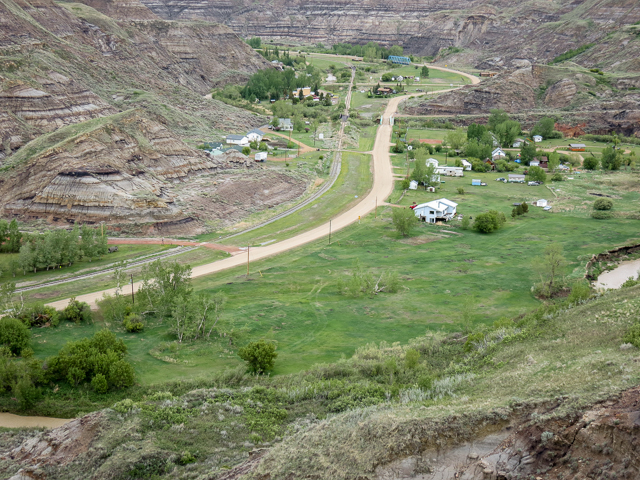
The town of Wayne sits in a scenic valley.
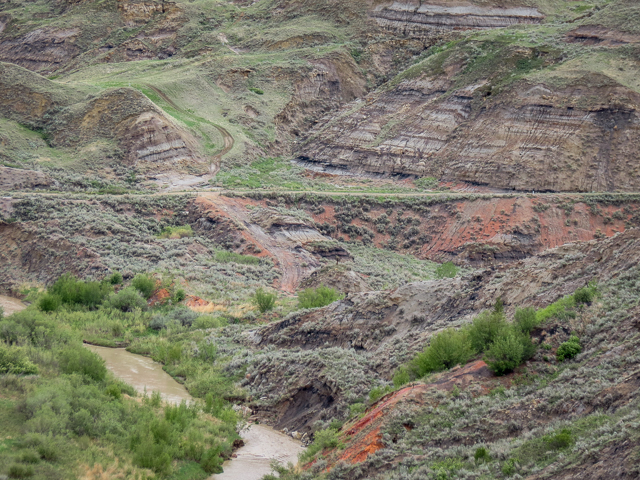
Down the valley evidence of another mine.
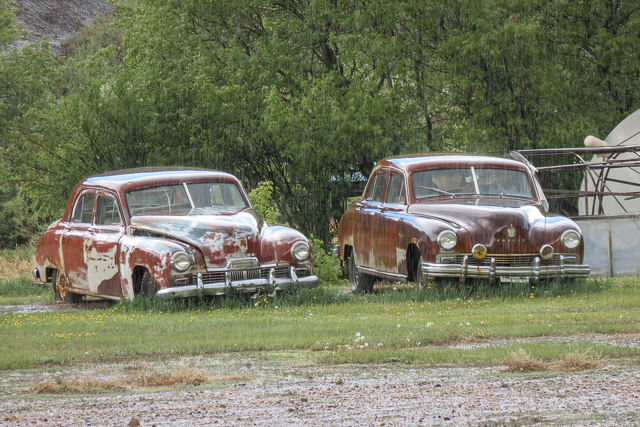
In town, two rare Frazers in the pouring rain.

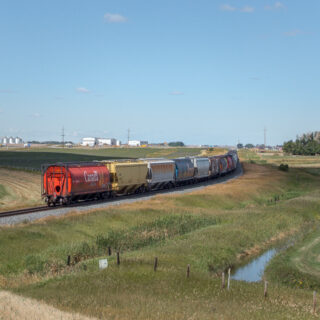
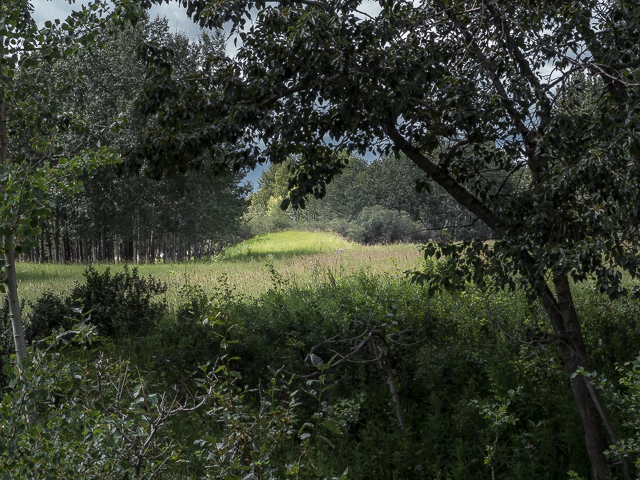
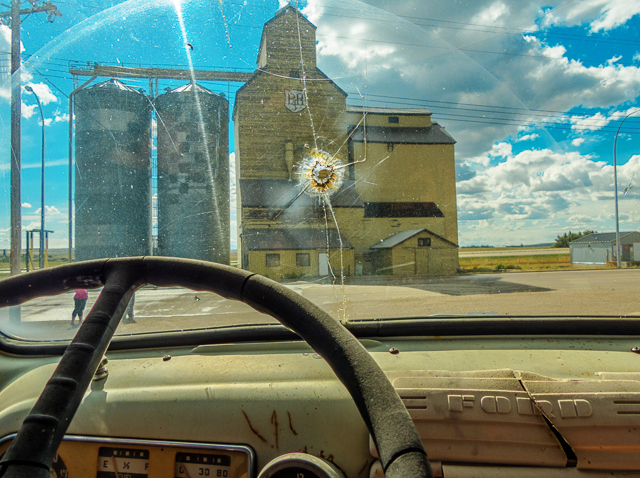
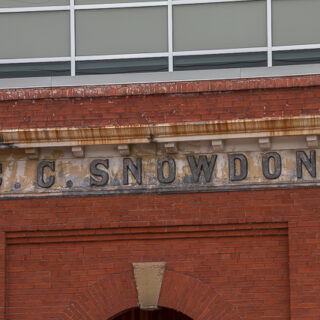
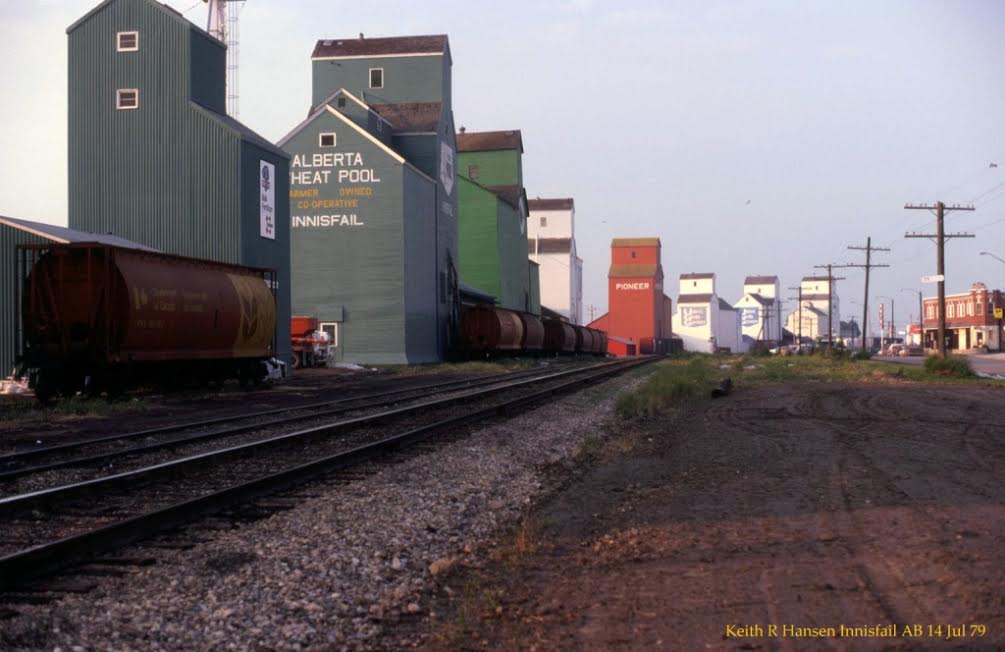
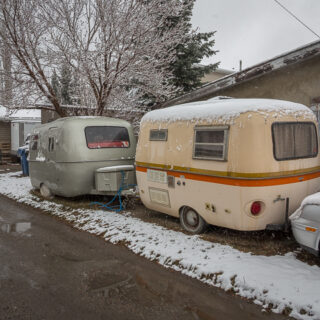
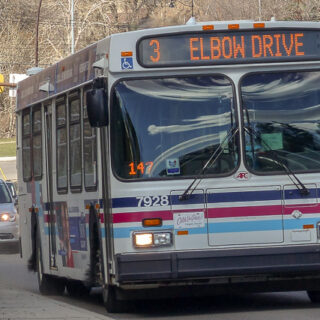
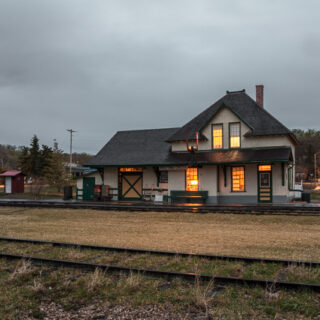
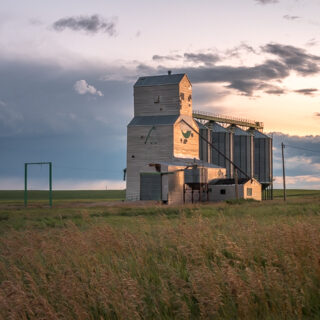
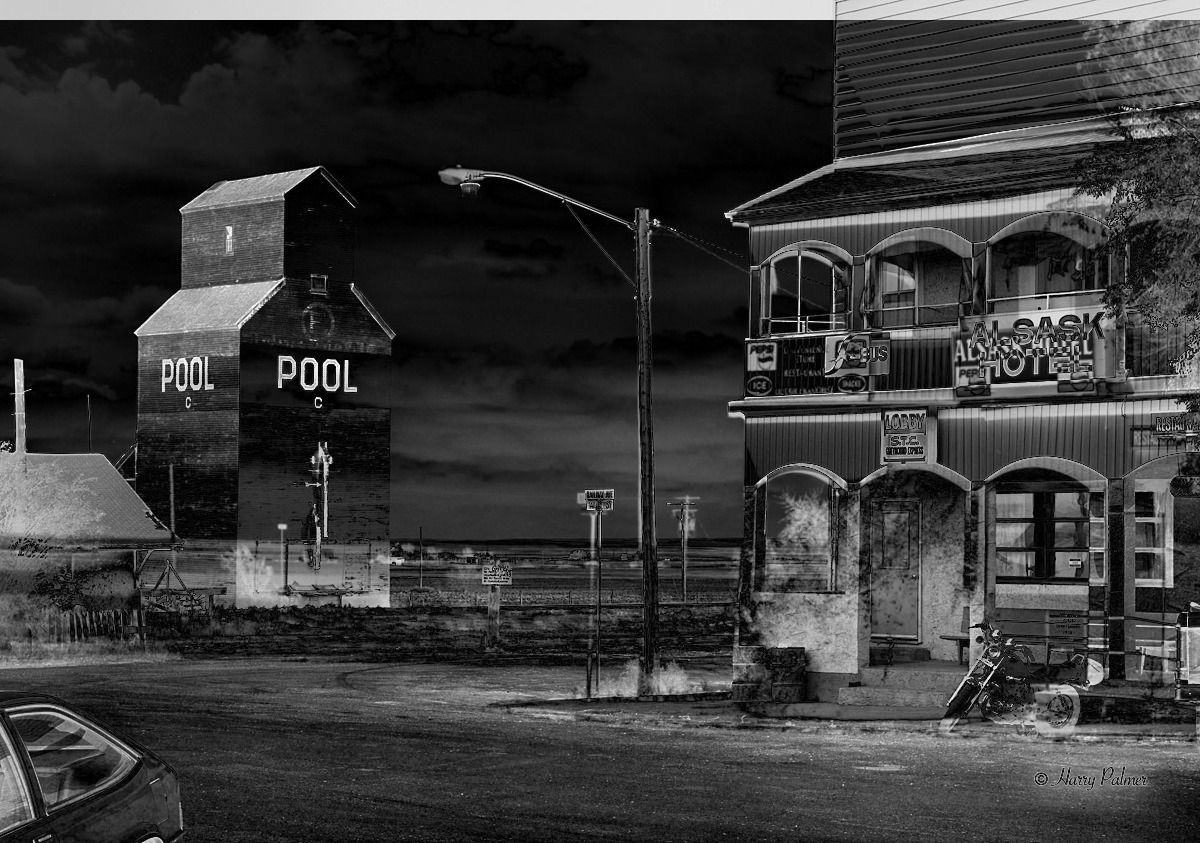
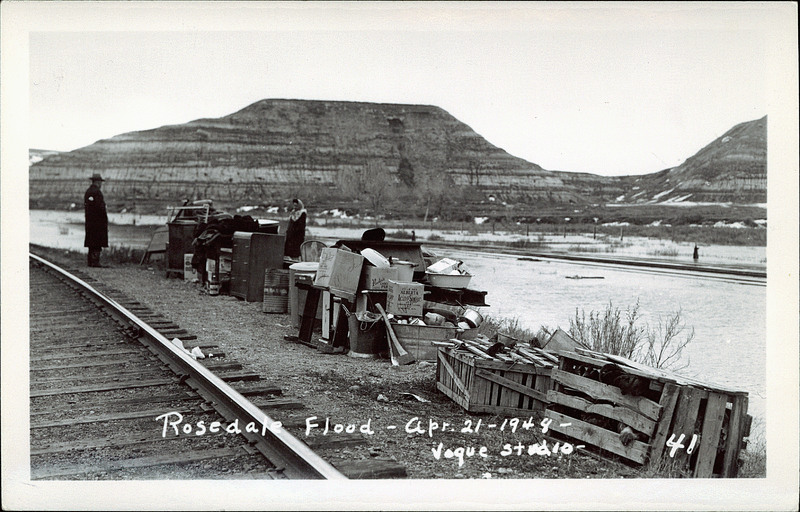
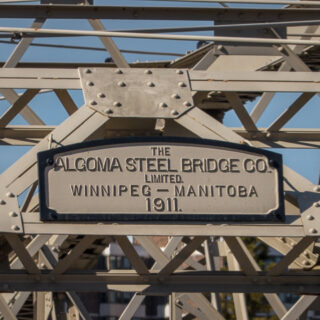







A classic railway scene! I so wished that I went out there when the track was in place to photograph it but alas.
Thanks for the share
Yeah, we missed out too. I don’t know what we were thinking!